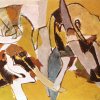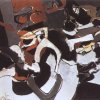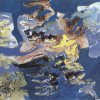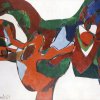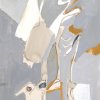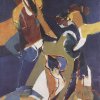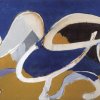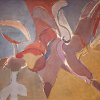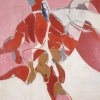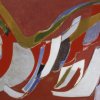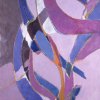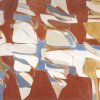Faithful to inspiration nourished by natural elements, which says essential things about humanity, the painter deepens and clarifies this nature, more apt than ever to exploit nuance and mystery. His works appear repeatedly as torn sails which reveal something of the tumult of the world (The death of the Warrior - La mort du guerrier, Uncontrollable laughter of a man of the XXest century - Le fou rire de l'homme duXXe siècle), yet they have a personal intimacy with the natural universe, and therefore are rich in metaphors.

During a stay in Brittany, walking on the beach of Dinard, the painter observed the seaweeds which, he said, "were in a wide variety of shapes, some sharp, others twisted" , adding: "I saw there the image of our times with all these noises of war, these disagreements, these misunderstandings". A number of paintings of that period have their origin in the discoveries made by the artist during his trips: Spain and Portugal in 1968, which inspired mainly the scenes of Nazaré and this surprising Tribute to Gaudi (Hommage Gaudi), Tunisia in 1969, which is the inspiration for figurative or more abstract gouaches inspired by Hammamet and Nabeul (Music in Hammamet - Musique à Hammamet), the Amalfi coast in 1970 (Night in Sorrento, Nuit à Sorrente), Greece and the Aegean Islands in 1971 that elicit a few aerial paintings in the most elegant decorative graphics (Greek Writings - Ecriture hellénique, Apamea's Dream - Le Songe d'Apamée), in 1972 Haute-Savoie and the Lake of Annesy where the meandering water courses inspire the inventive variations of the Thiou, in 1973 the Breton coast.



